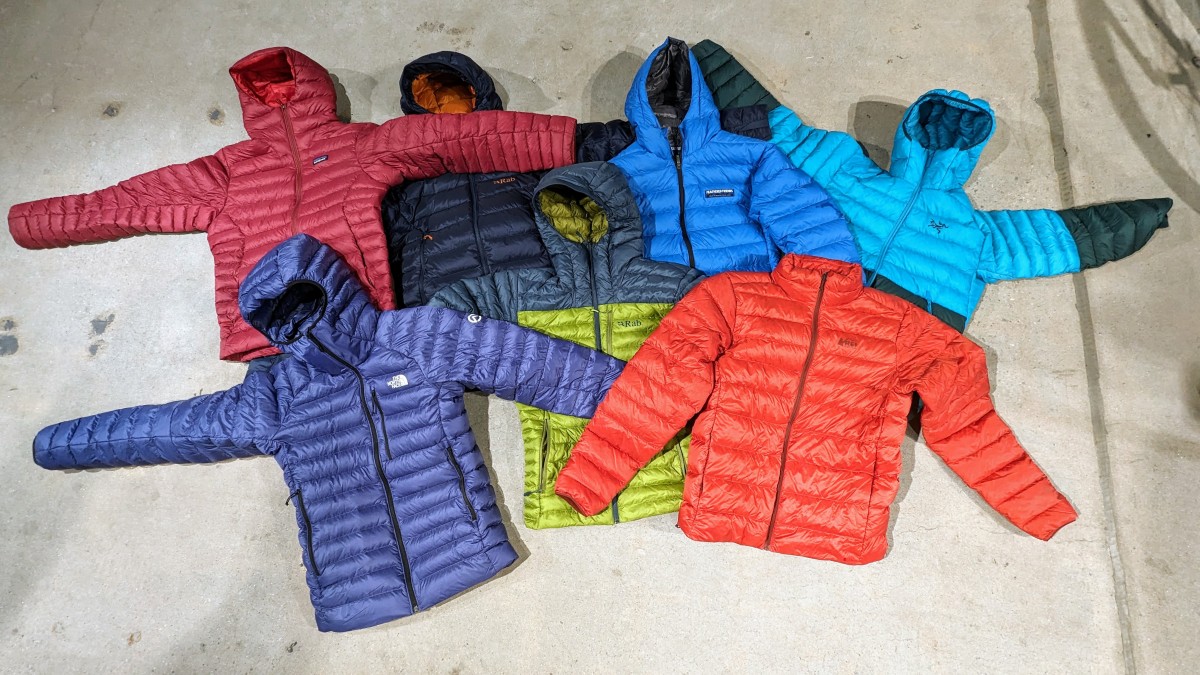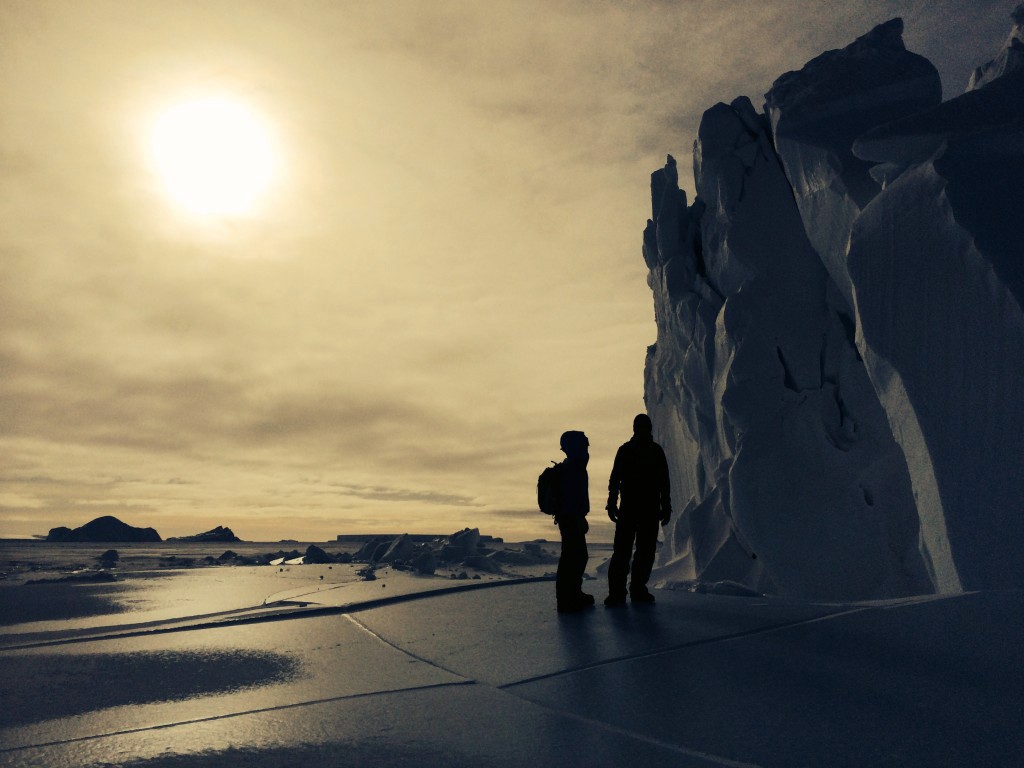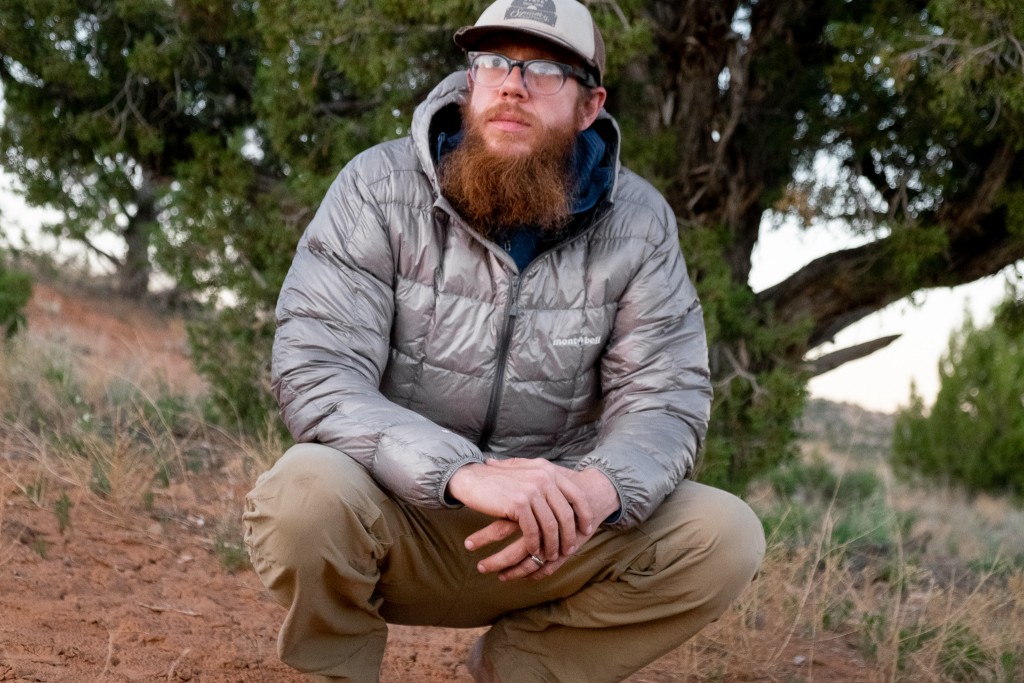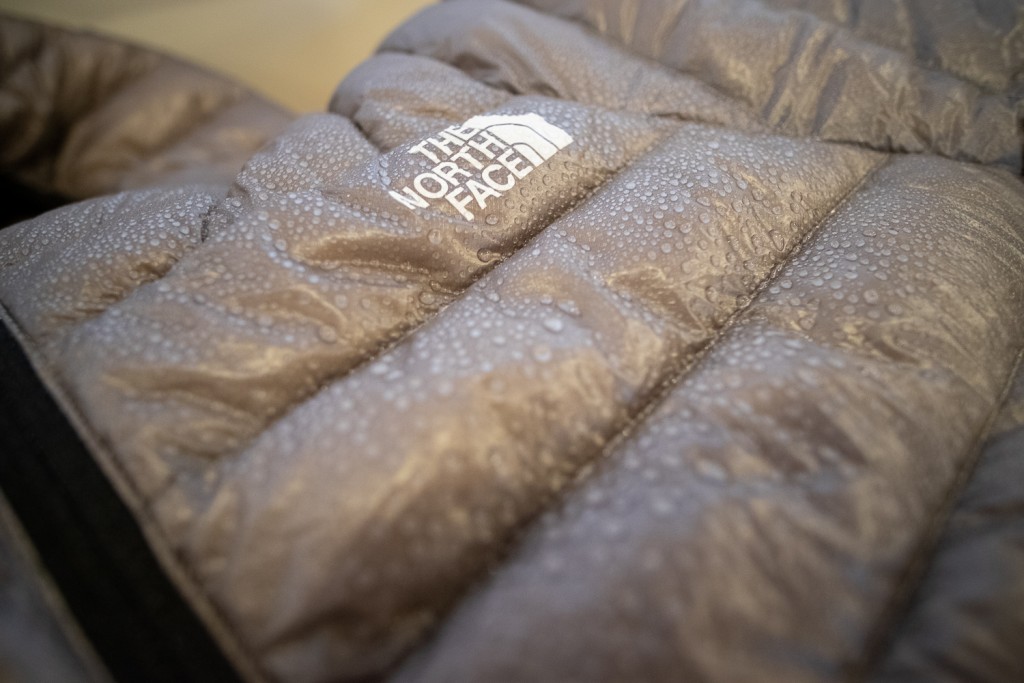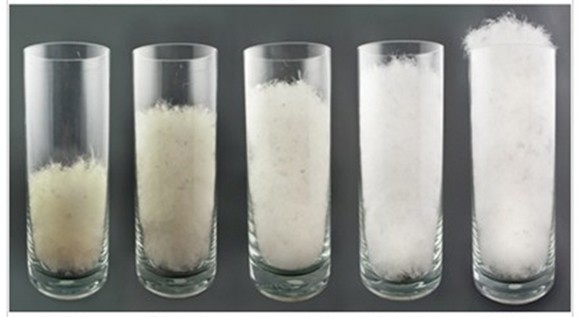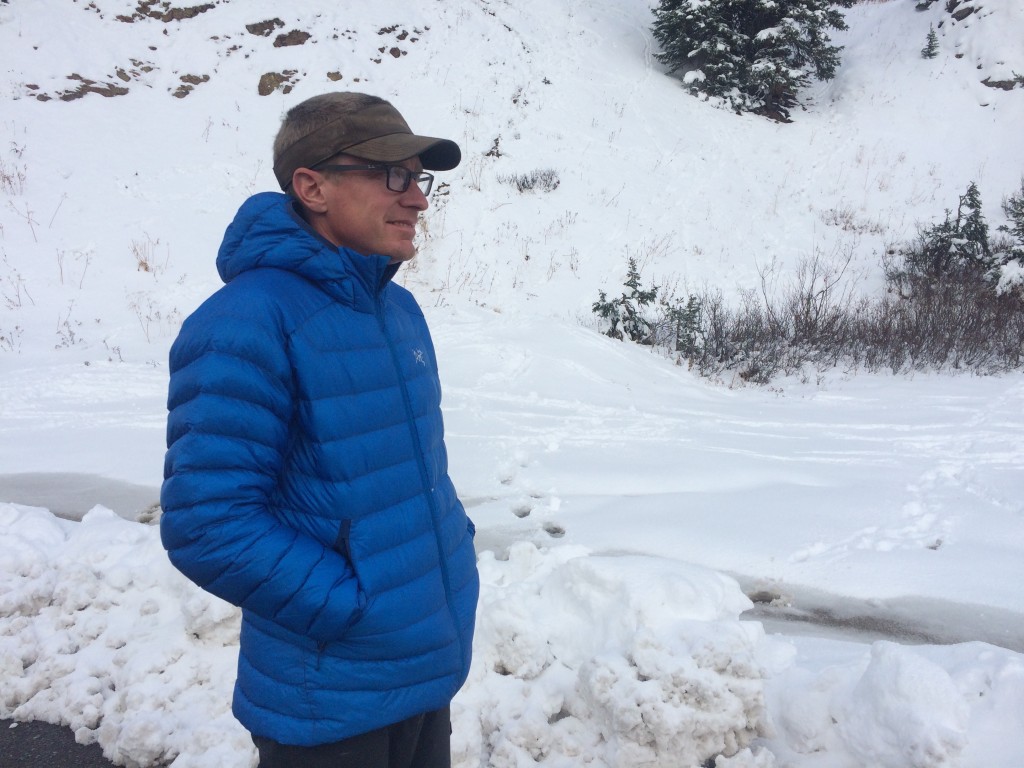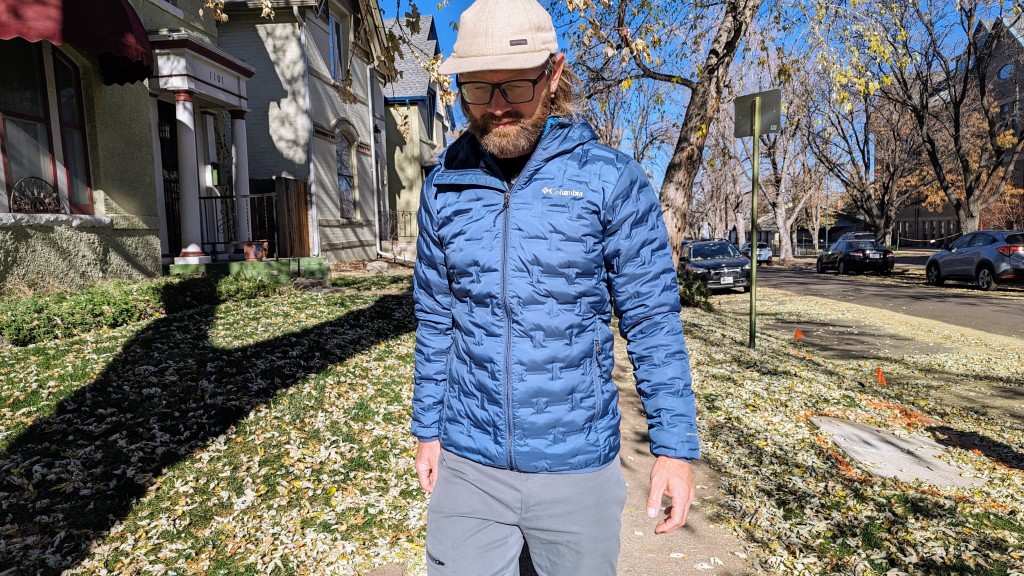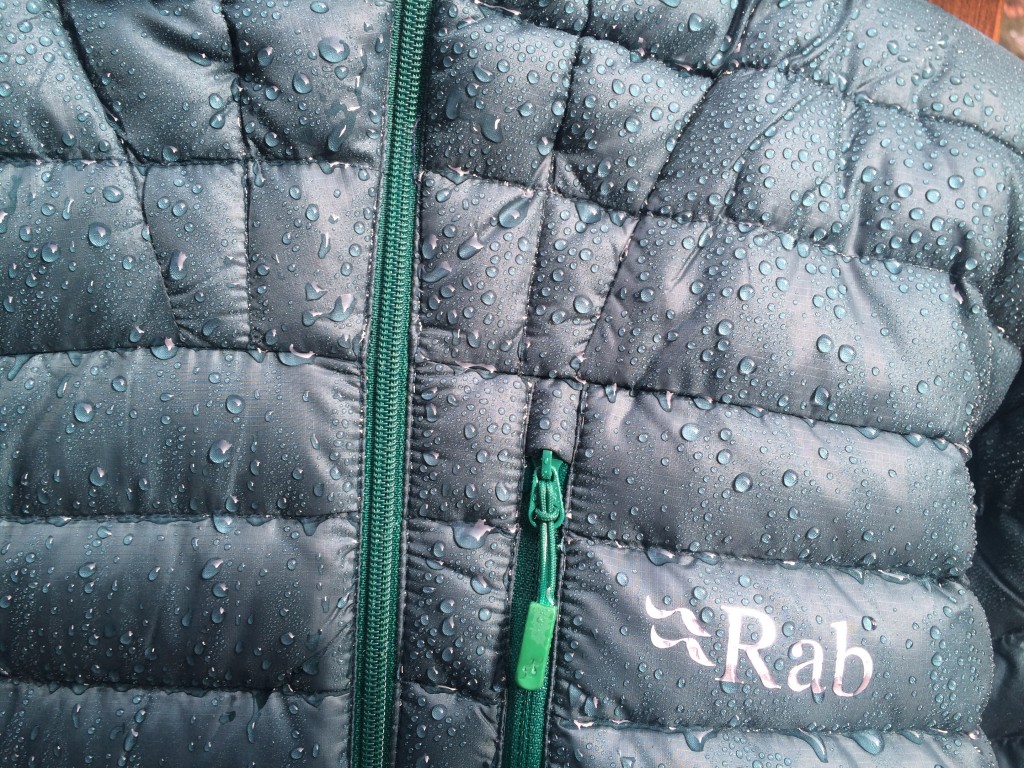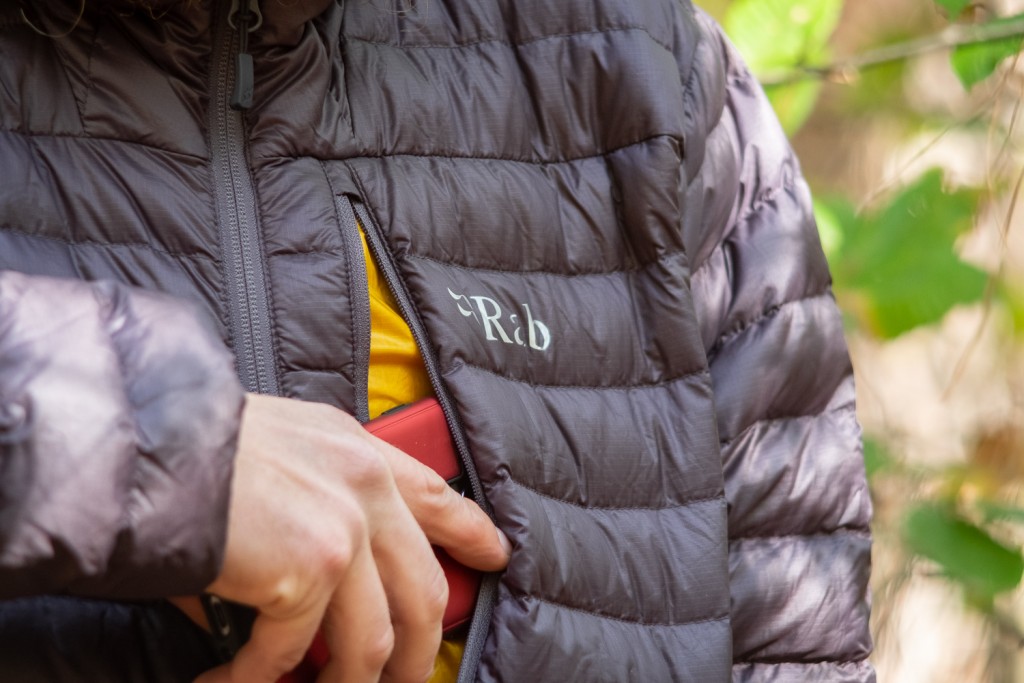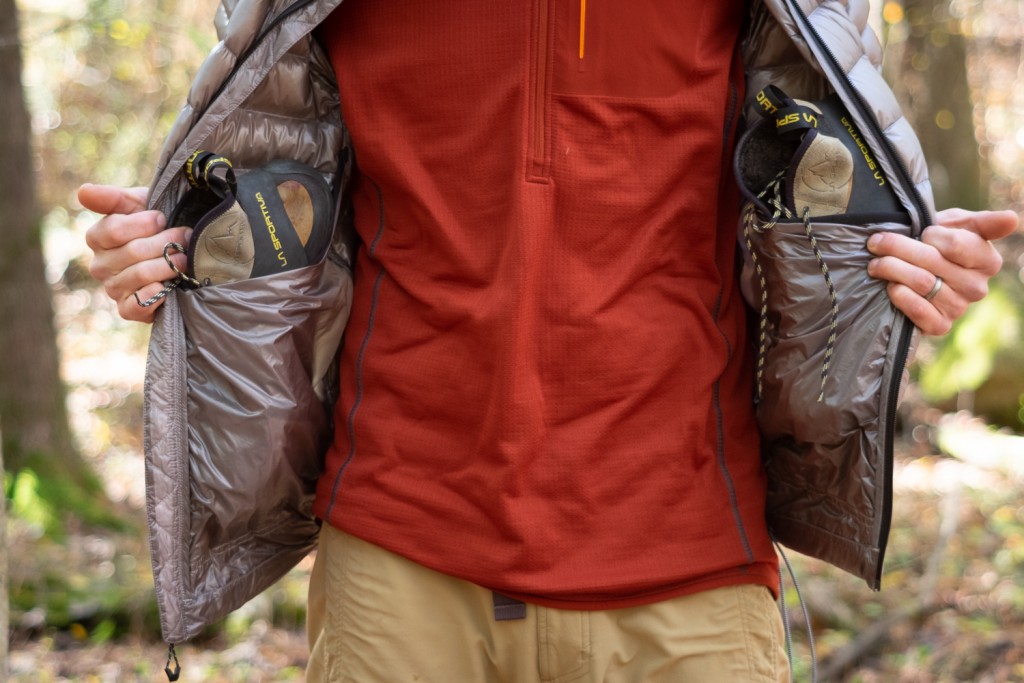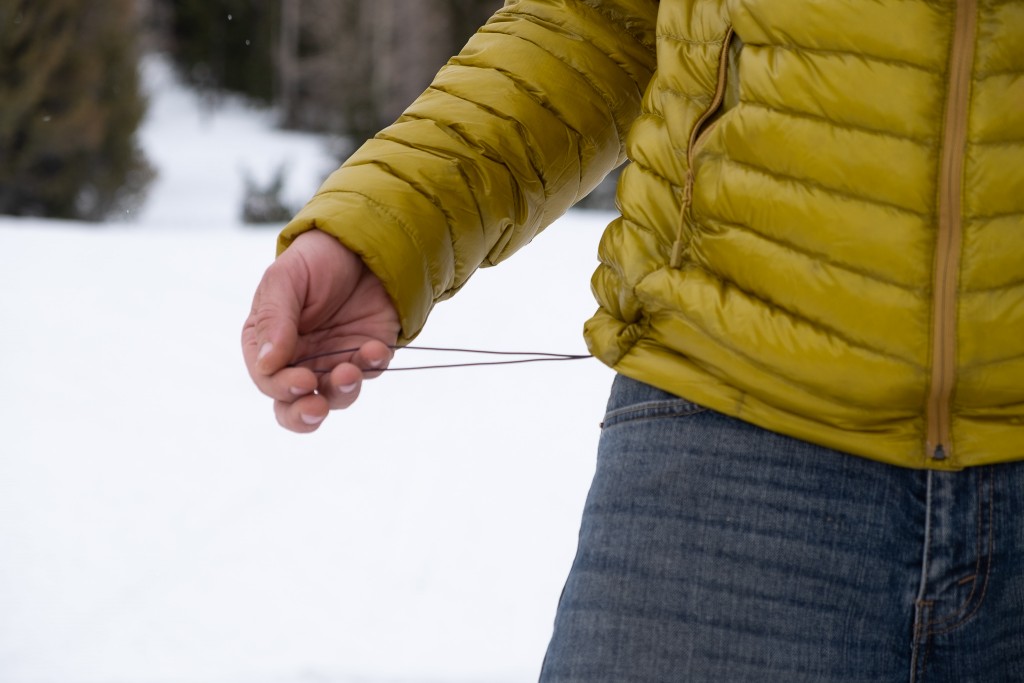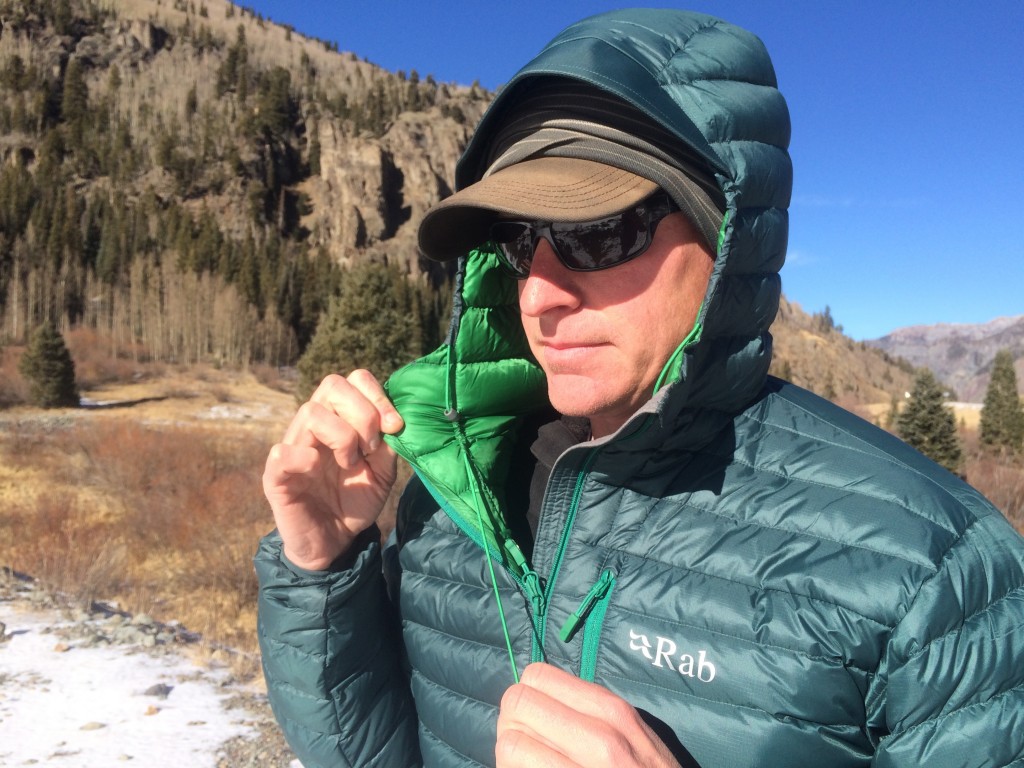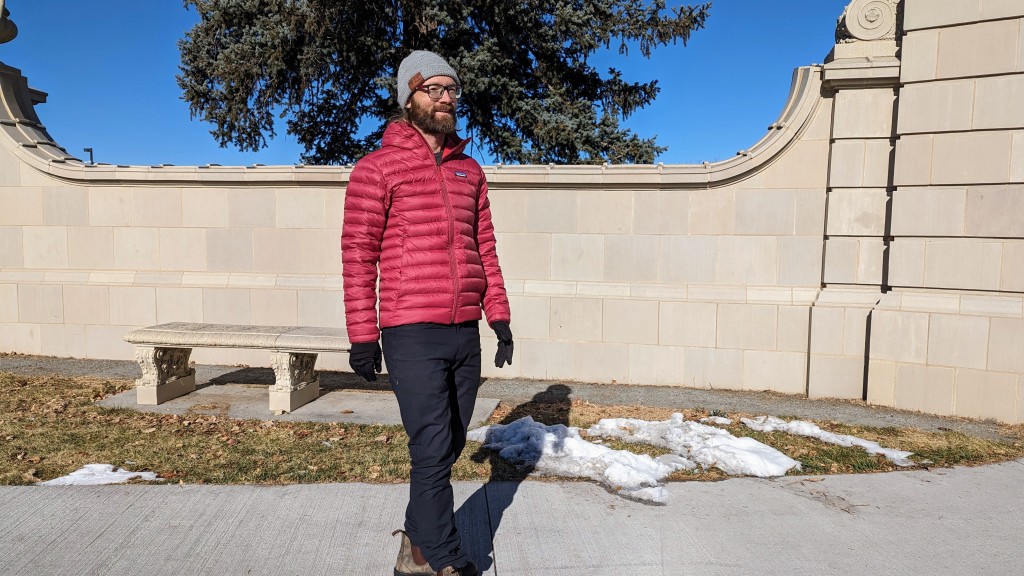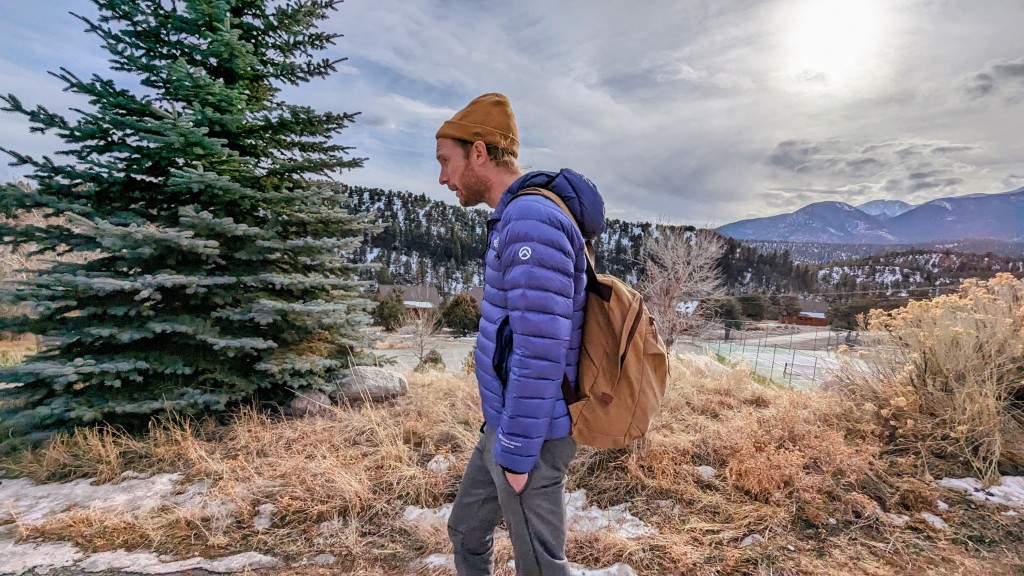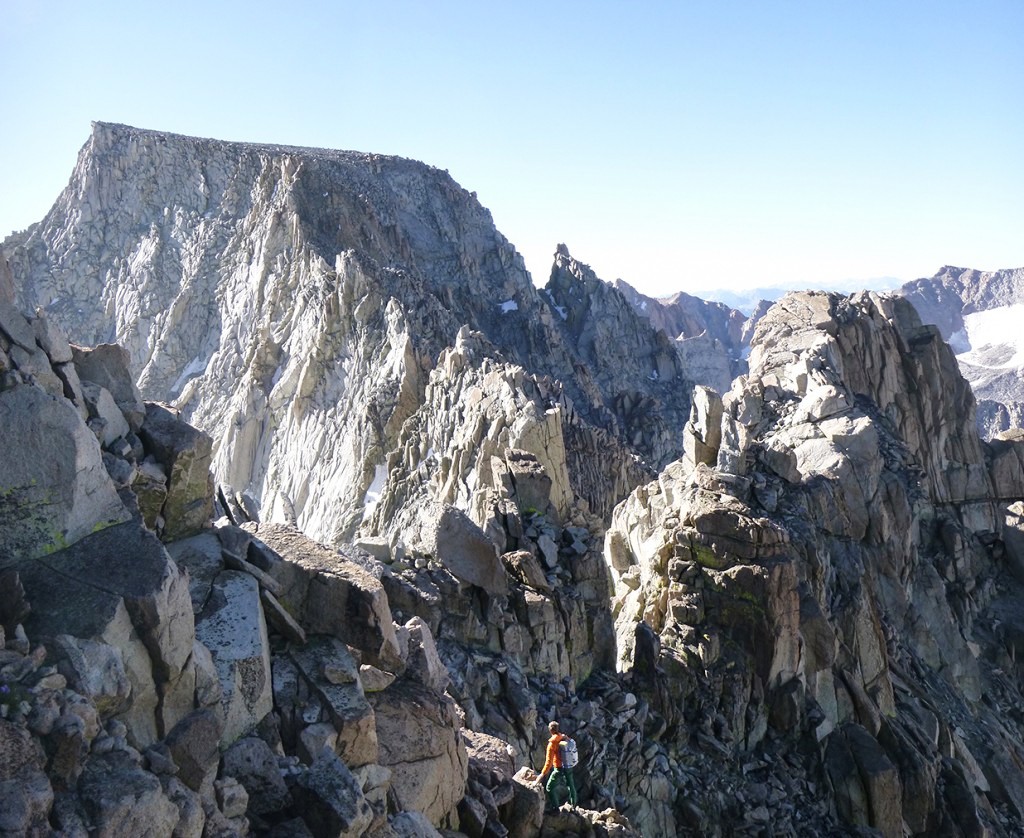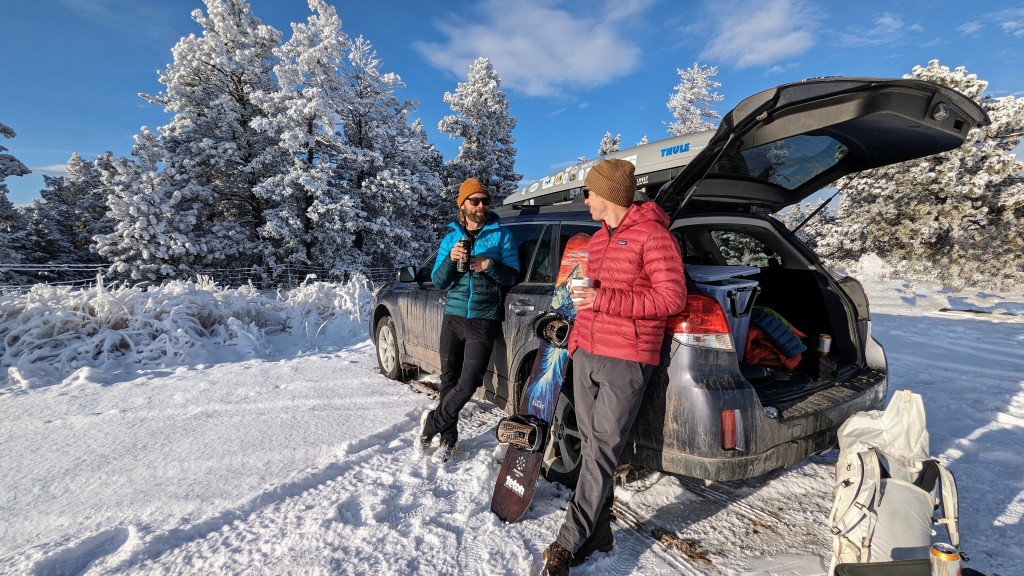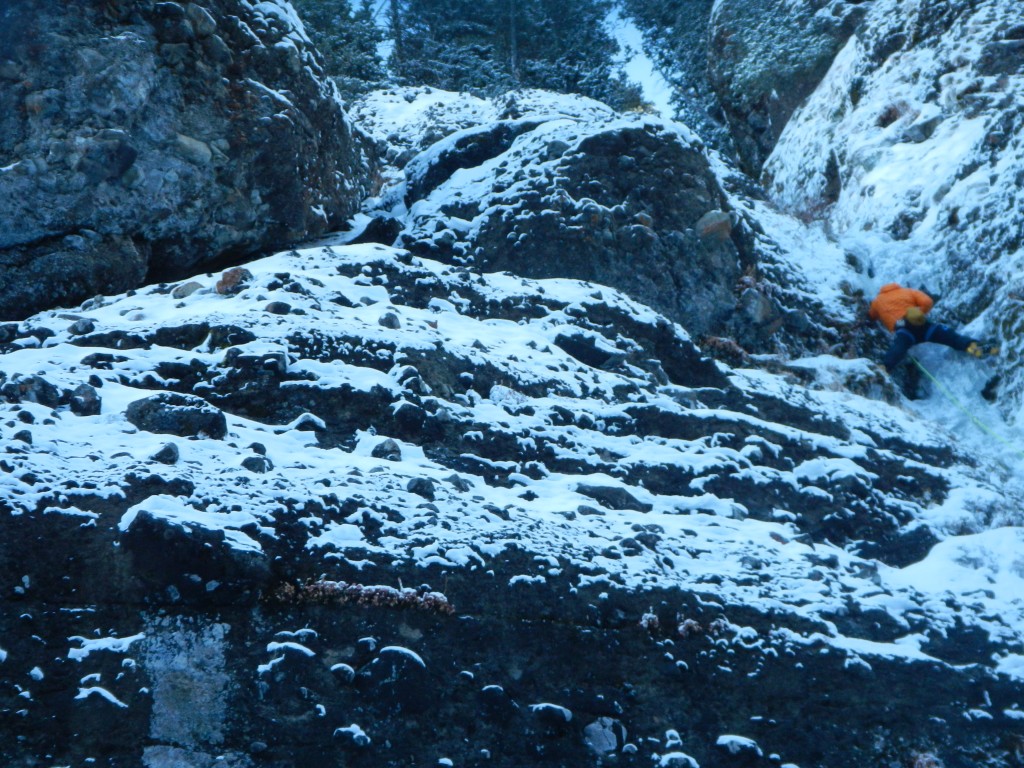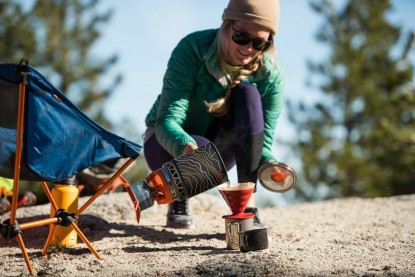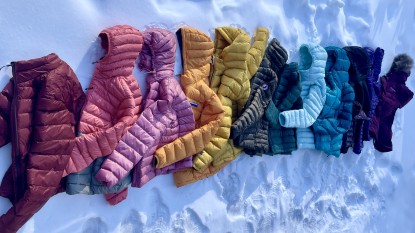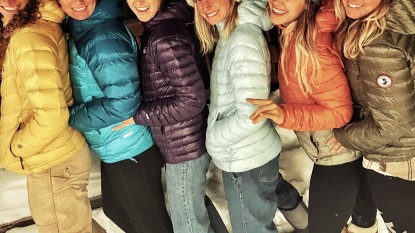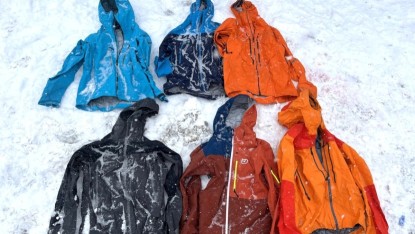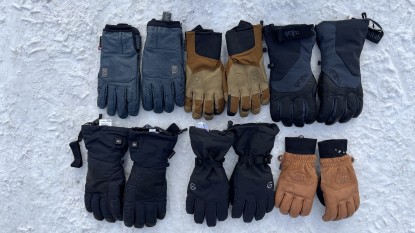Starting the hunt for a new down jacket is, without a doubt, one of the most overwhelming endeavors you can experience when it comes to shopping for outerwear. Down jackets are one of the more expensive parts of any layering system and typically will last you for many years. This makes choosing the right one all the more important. Down is the lightest and warmest insulator you can find, but not all down jackets are created equal. If you're not sure where to begin your search, our buying advice article will break down the different features of down jackets and will help teach you what to look for based on your specific needs.
What Is Down?
Every duck and goose has a soft layer of down located under their main flight feathers that help insulate the animal from the cold and wet conditions they find themselves in. The down layer is what makes it possible for them to exist in such cold conditions. The thicker feathers on the outside provide a waterproof seal to protect the down underneath from getting soaked. The highest quality down feathers don't show an obvious "quill" but instead have a spherical appearance that provides a large amount of loft.
These down clusters create millions of tiny air pockets. Your body heat warms up the air, which is then held in place by the down. When the down around you is thicker, you can trap more warm air around yourself, creating a warmer layer. That is why thick jackets, blankets, socks, sleeping bags, etc., are warmer than thin ones. No insulator is more effective than down, even in the lab. No synthetic fill can touch its warmth, weight savings, compressibility, or longevity. Synthetic fill breaks down and loses some loft every time you stuff it into a tight stuff sack.
Synthetic vs. Down Insulation
While you might assume that in this modern age, a synthetic option would greatly outperform anything found in the wild, that just isn't true when it comes to insulation. There are some vast differences between the two, and each one has its specific benefits. It's not as easy as saying which one is better because each one excels where the other does not.
Down insulation is considerably warmer for its weight and compresses into a smaller package. Unfortunately, down has one huge drawback — it loses its insulating properties when wet. If you get caught in a downpour for an extended period of time, the average down jacket will completely lose its loft, becoming a flat and soggy sack of feathers that can take days to fully dry out and won't keep you warm until it does dry. Modern synthetics, however, will retain the majority of their puffiness in wet conditions.
In addition to performing better in wet conditions, synthetic insulation stands up to punctures better. The continuous nature of filament insulation keeps it in place and continues to insulate, while down jackets will often leak significant amounts of feathers through any small holes.
Most down garments cost more than their synthetic counterparts, although the added expense will be offset in the long run due to the increased lifespan of the product. If you do see a few feathers poking through the fabric occasionally, don't worry, there are hundreds of thousands of them in each garment.
Products that use down will generally last longer than their synthetic counterparts. Stuffing a synthetic jacket into the bottom of your pack over and over will cause it to reduce the total loft and, in the process, lose much of its original warmth. Some of our testers still love their down sleeping bags that are almost 20 years old, which are still lighter than the newest synthetic bags. Down jackets may lose some loft after years of use, but with proper washing and storage, but even after hundreds of compressions, they last years longer than any comparable synthetic version.
Down Insulation
Best uses: Cold weather, dry climates, high elevation, when warmth to weight ratio is important, an emergency layer, and packable insulating layers
Synthetic Insulation
Best uses: Cold and wet conditions, as a mid-layer during activities, during activities where breathability is important, in conditions where packability isn't as important, for budget-minded
Hydrophobic Down vs. Regular Down
Hydrophobic down is down that has been treated with a DWR coating, similar to what companies apply to the outside of jackets to repel water. The hope is that these coatings will allow the down to repel water as well as synthetic insulation, thereby eliminating (or at least alleviating) the main drawback to down — its inability to maintain loft, and therefore warmth retention, when saturated with water. Companies have developed proprietary hydrophobic down, and many jackets in our review feature it.
We will admit that we found it difficult to successfully verify the claims made about hydrophobic down compared to regular down. We wore the hydrophobic down jackets into the shower for minutes at a time, getting them fully and completely soaked with water, and did indeed find that they seemed to lose little to no loft due to the soaking. This would suggest that the claims are mostly accurate.
That said, some jackets that did not have the treated down also performed equally as well when doused and lost very little loft. The DWR face fabric could be part of that reason. We also know that even regular non-treated down is somewhat hydrophobic by nature. Down has natural oils that resist water. While it's likely the newer type is better in wet environments, we don't feel it's a dealbreaker, and we would take great care to protect any down from a downpour.
There is a lot we don't know about the durability of hydrophobic down. DWR finishes are notorious for wearing off of shell fabrics, and determining the lifespan of a DWR coating on a down feather is difficult.
Down Fill Power
Down fill power has been one of the more confusing metrics for those looking for their first down jacket or sleeping bag. Most initially think a higher fill power automatically refers to a warmer garment. However, the fill-power just refers to how much a certain weight of down lofts. To keep things as simple as possible, let us pretend that 1 ounce of 600-fill down will loft up to fill six two-liter bottles, then 1 ounce of 900-fill down will loft up to fill nine two-liter bottles. Basically, a jacket with a higher fill power will use a lower weight of down to accomplish the same amount of loft or warmth.
Fill power also refers to how compressible a jacket is. A higher fill-power jacket that uses less weight of the filling will, in turn, compress smaller than a jacket of the same warmth that uses more of a lesser quality down fill.
Traceable or Certified Down
To address concerns about where the down in their products comes from, and to assure buyers that the animals were well treated before "donating" their down to your jacket, most companies are using Traceable Down or certified Responsibly Sourced Down, which essentially means that they disclose their sources and the harvesting practices of the down used.
Companies that trace their down ensure that it is solely the product of the food industry and that animals were never live-plucked just for their down. They take significant measures to ensure that the humanely treated animal down does not mix with other down from animals that were not humanely treated (some of the worst practices involve live-plucking the birds as well as force-feeding).
People who are concerned about the welfare of ducks and geese are encouraged to purchase down jackets from companies that trace their down or use only Responsibly Sourced Down. While we did not reduce the performance metric score for any company or jacket that didn't disclose the down harvesting practices, we encourage you to consider this important aspect of your jacket before making a purchase.
Construction
There are two methods predominantly used when constructing down jackets. Box-baffling and sewn-through baffling. Either can be welded or stitched.
Box-Baffling
Box-baffling is when small "boxes" or pockets of down are created between the inner and outer layers. This technique is more expensive and time-intensive and is typically reserved for the most expensive options. The main advantage to this is that it creates more room for the down to loft and reduces cold spots where each baffle meets at the stitching.
Sewn-Through
This method is the most common. It is easier, less time-consuming, and therefore cheaper for manufacturers than any other form of baffle construction. The outer material is stitched directly into the inner lining, separating the down into different baffles, which are usually horizontally, rectangle or occasionally, diagonally oriented. This method uses less fabric and is lighter than more complicated box baffle construction, and is less costly. Because of weight, simplicity, and cost, most jackets utilize this construction. Although sewn-through construction saves weight via the use of less material, it is less warm than box baffle construction because the down is pinched at the seams of the sewn-through baffles, and thus loft is reduced to zero at each point of baffle stitching. The sewn-through baffling prevents the migration of the down, but due to the simple construction, it also reduces the optimum loft of the down, creating "cold spots" at each baffle seam.
Welded or Bonded Baffles
Welded or bonded baffles are essentially the same thing, described with different verbiage. This construction technique fuses the inner and outer pieces of fabric together using heat, chemicals, glue, or a combination of all three, creating baffles. There is one major benefit to these techniques: since there are no holes in the outer fabric from sewing the baffles, they are more wind-impermeable and water-resistant. However, the bonded section of the seam is wider than a single-threaded stitch, so the "cold spot" created is, therefore, slightly larger.
Materials
The main outer shell and lining fabrics affect a jacket's performance in three primary ways: durability, weight, and water resistance. A lightweight model that weighs about nine ounces will usually have only an estimated three ounces of down fill. The remainder of the garment weight comes from the fabric, zippers, and other features like cinch cords. Jackets with lighter materials are obviously more compressible and will weigh less.
Different fabrics have different levels of durability. Thinner and lighter materials are usually more vulnerable to abrasion and snagging. Many super-light shell fabrics on the market are rather impressive; they allow for the construction of jackets with a phenomenal warmth-to-weight ratio while still offering an acceptable level of durability. You can tell a lot about the durability and weight savings of a shell fabric when manufacturers list the denier, the unit of measurement for the linear mass density of fibers.
Stuffable and Clippable
One of the great advantages of down is its compressibility. Many jackets either come with a stuff sack or compress into their own pocket. A stuffable jacket that has a clip-able carabiner loop is advantageous for climbing because it can easily be clipped to the back of your harness. This is particularly nice when climbing multi-pitch routes where you only have one small pack the follower carries, as it allows the leader to lead with the jacket on their harness and thus have it at the belay above.
Features
Besides the obvious differences in warmth, lighter jackets also differ quite a bit in terms of pockets and features. Many lightweight down jackets go light on features as a means of saving weight. The first features to be cut often include drawcords on the hood and waist and having fewer pockets. Below we briefly make mention of the common features found on the jackets in our roundup, and what styles worked well, and what didn't.
Pockets
There are many types of pockets found on down jackets — each with their best uses — that you may want in your future coat.
Handwarmer PocketsThese are the two front pockets designed for keeping your hands warm or stowing your snacks in. We love zippered handwarmer pockets for keeping our valuables safe while out and about. Thin fleece linings inside add extra warmth, particularly on bare hands. Placement matters when looking for a technical layer, where you'll want them to be high enough to be used even with a backpack waist belt or harness on.
Internal or External Chest Pockets
Many jackets have this handy feature, although some do not. These pockets are great for storing items like a smartphone, sunglasses, or chapstick close at hand. Internal pockets are generally better insulated, a nice feature for keeping a phone's battery alive in the cold, while external pockets are, without a doubt, easier to access quickly and without losing your body heat.
Internal Stash Pockets
These pockets seem so simple but can be some of the most useful pockets. These are large, drop-in, un-zippered pockets on the inside of the jacket. They are great for storing hats, gloves, warm water bottles, batteries, folded papers, transportation tickets, or even rock climbing shoes on the inside of your jacket, where they can stay toasty warm within your heat envelope and are easy to grab at a moment's notice.
Hem Drawcords
It is common to have a drawcord pull (or two) on the hem to tighten the jacket around the waist and hips. This feature stops cold air from flowing up into the jacket, particularly on windy days. The location of the pull cords, as well as the type of buckles used, made a big difference in how much we liked these features.
Sometimes, these drawcord tails are housed inside the handwarmer pockets, as opposed to dangling from the waist, which prevents them from catching on sticks or bushes along the trail. Some incorporate a place to clip the dangling cord up into the inside of the jacket. Most simply have a loop or loose end that dangles from the bottom hem.
Hood Drawcords and Elastic
In general, jackets utilize four separate methods of securing and tightening the hood: simple elastic, a single drawcord in the back, dual drawcords on the side of the face, and a combination of dual drawcord and a rear adjustment — or no adjustment at all. Elastic is the least adjustable option that still provides some level of flexibility. We love the single drawcord that tightens at the back of the head, as they are easy to use and hold the hood in place very well.
Best Jackets for An Intended Use
The best way to approach buying a lightweight down jacket is to first consider what you intend to use it for. This holds true for just about any piece of equipment but is equally important for a down jacket. Carefully considering how and where it will be used will help you to understand what sorts of conditions it will need to protect you from. It will also help you to paint a picture in your mind about what characteristics are top priorities and tailor your ultimate choice based on those desires. Below, we pick out a few of the most common uses for a lightweight down jacket and offer our opinions on what to look for in a jacket for that purpose.
Everyday Life/Around Town
Most people want a warm down jacket to simply stay warm as they live their life in their cold winter town. If you're going to wear it all the time, then comfort, warmth, fit, and style are the most important considerations.
We typically throw a down jacket over whatever normal clothes we are wearing for the day all winter long. So, it's important that the jacket is large enough to be worn as an outer layer. When it comes to style, we typically shy away from overly technical garments and instead gravitate toward what matches our regular wardrobe and fits into our urban and home environments.
Camping and Backpacking
If you're bringing a down jacket camping, you want it to be lightweight, portable, and warm. We often bring a down jacket in our camping and backpacking kit to wear around camp at night and on chilly mornings around the fire.
Depending on how cold of conditions you plan to camp in, get the right thickness of jacket for your intended use. If you're only camping in the summer, then a thin and light jacket will be fine. But if you're planning on doing winter camping, get a thicker jacket. It will be heavier, but you'll be grateful for that extra down on cold nights.
Hiking and Snowshoeing
A down jacket is a great layer to wear while winter hiking. We bring a down layer on every hike we go on, even during the summertime. There's nothing better than pulling out that lightweight down jacket while taking a break at the summit. For hiking, look for a lightweight jacket that is warm enough for the conditions you plan to use it in but breathable enough to keep you from condensing inside as you move.
Climbing
There are many different climbing scenarios where you probably want a down jacket. Whether you're alpine climbing, sport climbing, mountaineering, winter, or ice climbing, a good down jacket will keep you warm when the sun goes down or you're getting into higher elevations. Down jackets make great belay jackets, too.
For climbing, we look for features like internal stash pockets, where we keep our thermos, gloves, and even our shoes toasty warm in between burns on the project. Consider also how well the jacket moves with you — does it expose your wrists or torso as you put your arms overhead? If you're wearing a down jacket in the alpine, be careful not to rip it open on sharp rocks. We suggest wearing it as a mid-layer under a more durable hardshell jacket or going with a more durable (but likely heavier) synthetic jacket.
In our experience with winter and ice climbing, it is important to sacrifice a bit of weight in favor of serious warmth, as we are generally willing to do anything to stay warm, keep having fun, and keep blood flowing from our torso to our extremities. In these scenarios, we would be more likely to wear one of these down jackets as a mid-layer under our hard shell to keep us warm all day and to keep it dry and protected.
Skiing and Snowboarding
Down jackets make a great insulating layer for skiing. A high-quality, warm, down jacket layered under a shell jacket works well for keeping you warm on the lift. We like to get a jacket that we can layer over our favorite fleece and under our winter shell to stay nice a cozy.
For backcountry skiers, a lightweight down jacket will serve primarily as a mid-layer to be thrown on to ward off chill on the downhills. Typically, a person will generate way too much heat on the skin track to consider wearing a down jacket while moving uphill, but will usually want to trap that warmth as the sweat cools for the chilly downhill. In these circumstances, light is certainly right. A thin down mid-layer to go underneath a hard or soft shell that keeps the powder and moisture off is the way that we typically layer.
Wet Climates
Down has long been shunned in wet climates because it loses most of its insulating properties when wet. Many jackets feature DWR treatments to their exterior fabric, and some are even filled with down that's been similarly treated to have mild hydrophobic properties. However, it is important to remember that no down jacket is waterproof. For long periods in wet snow or rain, you'll want to layer a rain jacket or hardshell jacket over the top.
Conclusion
As with most pieces of equipment, the process of choosing the right down jacket for you begins with identifying the conditions you will likely face and then finding the product that best handles those circumstances. While we have ranked all the jackets we tested and given awards to our favorites, the reality is that all of these jackets have their pros and cons, and each one has a purpose that may fit your use perfectly.

